Bird counting station Katwijk
Migratory birds passing through Katwijk
At the end of summer, countless birds abandon their nesting areas. They fly to the south of Europe and Africa to winter. After the winter they return. Katwijk aan Zee is located on this bird migration route. In times of bird migration, the coast and the coastal waters are a true highway for birds.
Counting stations
You are in one of the most beautiful spots along the Dutch coast for observing bird migration. Ever since the early 1970s, birds that fly over the sea are counted here. We recommend people wanting to count songbirds in the fall, to use ‘De Puinhoop’ counting station, the high dune north of the Noordduinen parking lot (next to the riding school).
Seasons for bird migration
- In spring and in summer you will mainly see seagulls, terns and waders.
- During severe storms, especially in September and October, small skuas, Leach’s petrels and shearwaters fly by. Just like the rarer gulls, such as the Sabine’s gull. These birds spend the winter on high sea. The strong onshore wind blows them to the coast.
- When weather conditions are favourable, from mid September until the beginning of November, you can see a spectacular migration of songbirds. This is when for example meadow pipits, starlings, finches and thrushes fly over the coastal strip of dunes and the beach.
- In winter, you will also see common scoters, grebes, divers and auks, as well as gulls.
- Gannets can appear during any season.
Sanderlings

This grey and white coloured bird dribbles along the tide line of the North Sea beaches. It is a wintering, migrant bird. As of August, they return from their breeding sites in the polar regions and they leave again in March, although small flocks may still come by as late as May on their way to Greenland. Did you know that this bird can fly for days in a row?
Sandwich tern

A summer bird that passes by our coast in April/May and August/September. An elegant, white tern with a black crest and a yellow-tipped black bill. This bird has a characteristic scraping call.
Glaucous gull
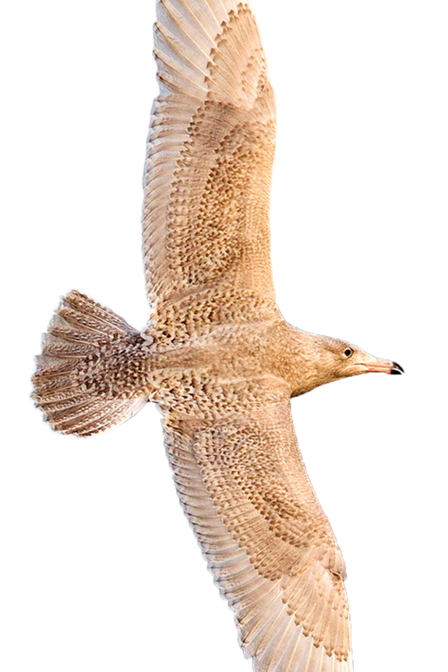
This breeding bird from the Arctic region is one of the rarer gull species. You can recognize it by its large size and pale wing tips. It is related to the Iceland gull, which can also be spotted here regularly in winter.
Gannet
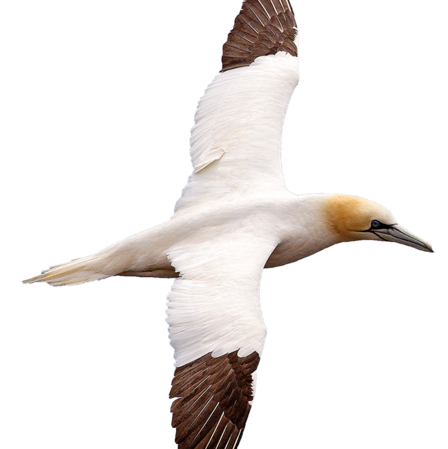
This bird breeds for example on the cliffs of North East England and Heligoland (Germany). Adult birds are black-white; young birds are brown. They make spectacular dives when they are looking for food, sometimes right off the coast.
Parasitic jaeger
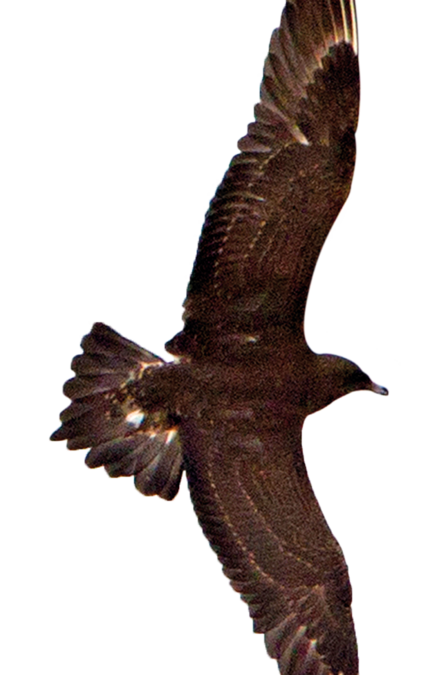
This species comes in different morphs, from light to dark brown. Favourite breeding sites include Scotland and the tundras in Scandinavia. The parasitic jaeger pursues terns and gulls. By using an agile flight, like that of a falcon, it forces its victims to regurgitate their food.
Lesser black-backed gull
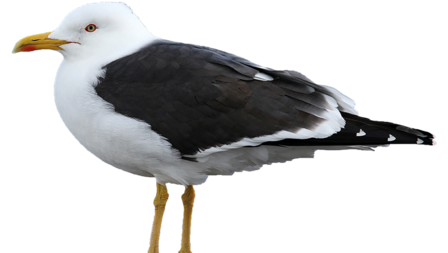
Like the herring gull, the lesser black-backed gull is a general breeding bird around Katwijk, but it also passes through in large numbers in the spring and in the fall. Unlike the herring gull, it winters in southern regions. In winter, only a few birds stay in the Netherlands.
Eurasian spoonbill
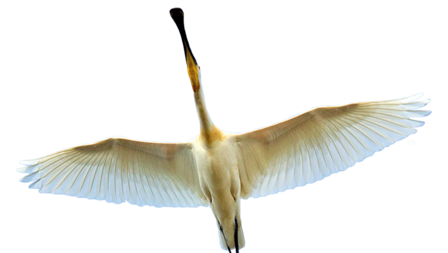
Each year, more and more Eurasian spoonbills pass through Katwijk, a sign that the population of Eurasian spoonbills is increasing in the north-west of Europe. Still, it remains a rare species. The bird can be seen in September and the beginning of October.
Bar-tailed godwit
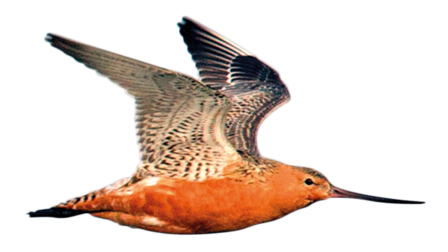
A true migratory bird, with a beautiful russet summer plumage. It winters in north-west Africa and breeds on the tundras in Siberia.
Leach’s storm petrel

Small, dark with a distinctive white rump. Hardly visible when flying through troughs.
Common tern
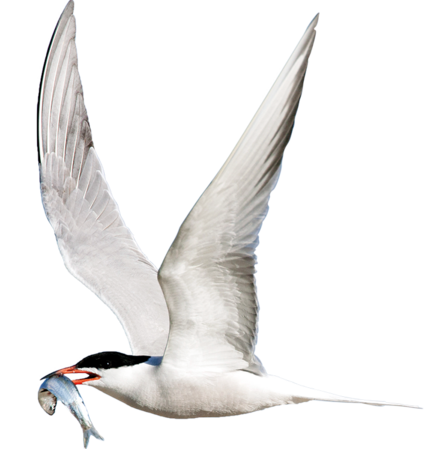
Just like the sandwich tern, the common tern passes through in April/May and August/September, though in larger numbers. The common terns that can be seen here in breeding season, breed on flat roofs of company buildings in the vicinity. They fish at sea and fly over the village to their young on the breeding sites with the fish in their beak.
Common murre
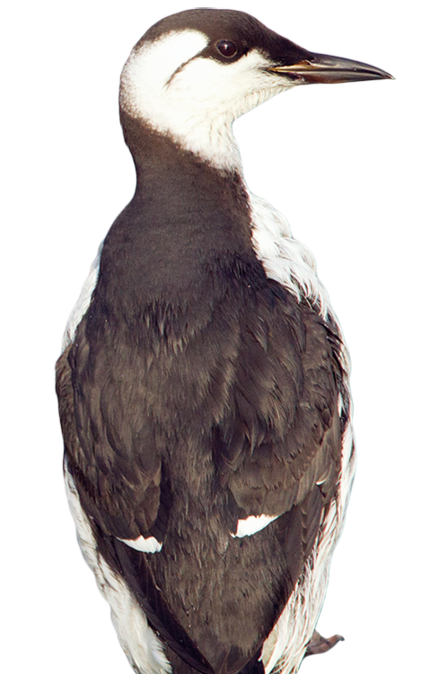
A bird that resembles a penguin. The common murre, however, does fly: fast and low above the sea. Their plumage is dark brown and white. Sometimes these fish eaters gather in groups of thousands off the coast.
Common scoter
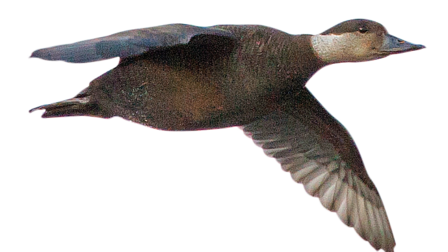
Males are pitch-black, females are brown. They fly rapidly in disorderly groups low above the water.
Mediterranean gull
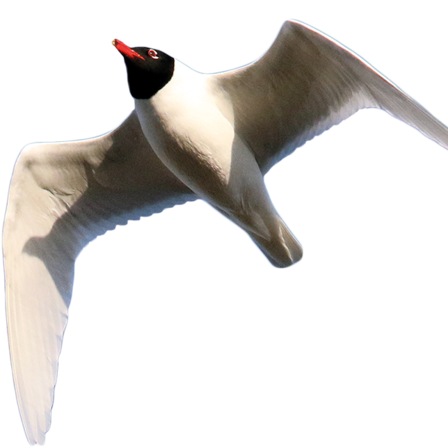
In summer, adult birds are beautiful with their snow-white body, dark heads and red beaks. Young birds are more brown and grey. The Mediterranean gulls that we see here usually come from the colonies of the islands in South Holland and Zeeland.
If you want to read more about migratory birds in and around Katwijk, please visit: www.birdclubkatwijk.nl
Photos: Menno van Duijn and René van Rossum.